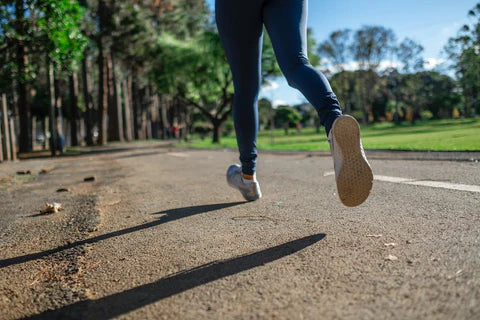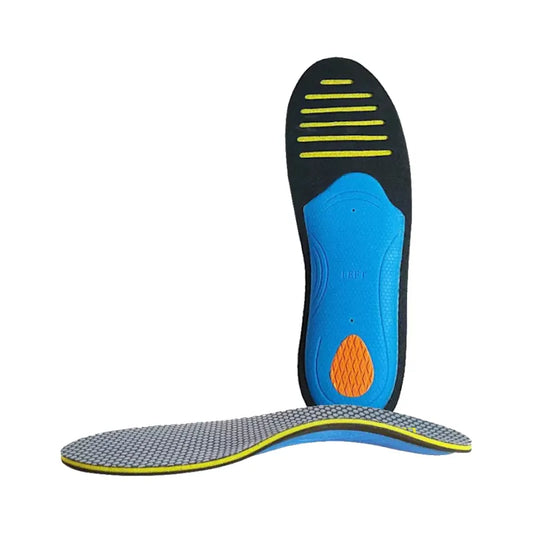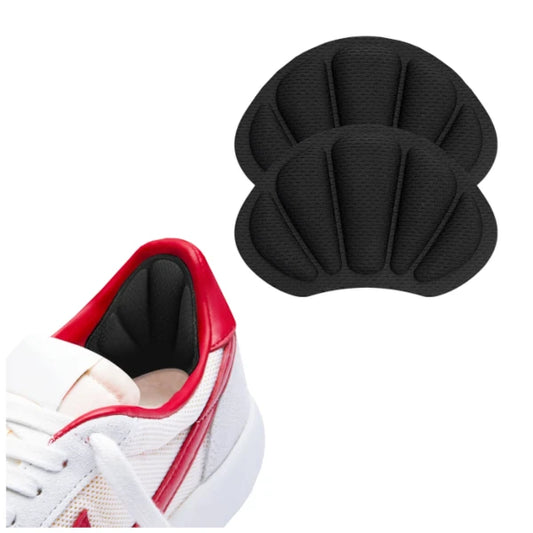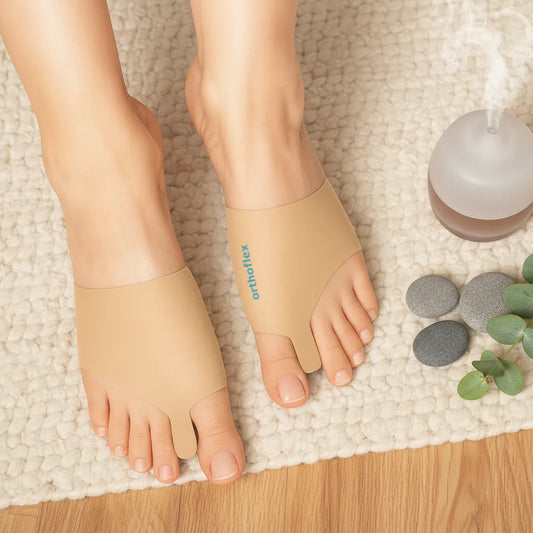
Can I run with flat feet?
Share
Introduction

Flat feet, or having no arch or a very low arch in your feet, can be caused by various factors such as genetics, injuries to the foot or ankle, medical conditions like arthritis, diabetes, or muscular disorders, as well as pregnancy, aging, and obesity.
This condition can cause several symptoms such as foot pain and discomfort, knee pain, hip pain, back pain, changes in posture, and difficulty in walking and running.
Running, being a physical activity that requires exertion of leg muscles and movement of feet, can be particularly challenging for people with flat feet.
Running injuries commonly affect the lower body, including the knees, ankles, hips, groin, and legs, but people with flat feet are especially prone to foot injuries and pain, which can negatively impact their running performance.
Fortunately, there are ways to manage flat feet and make running easier.
With the guidance of a healthcare professional, proper self-care practices, and appropriate footwear, individuals with flat feet can improve their running performance and reduce their risk of injuries.
Problems during running
Flat feet or low arches can impact your running beyond just a structural difference from the norm. The anatomy of your foot can affect your foot strike and biomechanics. When someone has flat feet, their arches have collapsed, causing the ligaments, tendons, and bones in their feet to sit lower or flat against the ground. This can cause discomfort and pain while walking or running, and as a result, the foot may roll inward excessively, leading to overpronation.

Overpronation in flat feet can cause tension and pain in the toes and medial feet area. The arch of the foot acts as a shock absorber, so if it is collapsed, it won’t distribute the impact correctly, leading to higher forces in the foot and the rest of the body.
This can result in pain and discomfort not only in the feet but also in the knees, lower legs, hips, and lower back, increasing vulnerability to sports injuries such as tendinopathies and shin splits.
In some cases, swelling of the feet may occur after running for extended periods, affecting performance.
It is important to note that not all flat-footed people overpronate. Some individuals may not realize they have flat feet and have been running for years without any issues because they do not overpronate.
Flat feet adults are susceptible to tendinopathy of the posterior tibial tendon since this tendon is responsible for maintaining foot arches. If it is injured, fallen arches can develop.
Research has also discovered a connection between flat feet and decreased ankle muscle strength, which can create obstacles for short explosive events such as sprints and long-distance running.
Treatment
If you have flat feet or a collapsed arch, you can still run with the right modifications to your training and footwear.
To prevent overpronation when running, use orthotic arch support inserts in your running shoes to give your feet and ankles extra support and prevent pain.
The severity of your condition will determine the type of orthotic support you need. Running shoes with solid mid-sole support, such as motion-control and stability shoes, can also help prevent pain during exercise.
Avoid shoes with excessive cushioning and little arch support.
Rebuilding your arches with exercises like toe curls and hell raises can improve muscle strength in your intrinsic foot muscles and leg.
Working with a physical therapist to strengthen your hips, ankles, and feet can also minimize muscular imbalances or weaknesses contributing to overpronation.
To minimize pronation while running, choose flat terrain with little to no unevenness.
Before returning to running, it is important to have your gait and run analyzed by a physical therapist to determine if flat feet is the cause of your overpronation or a result of another kinematic alteration.
Pay attention to your body and make necessary modifications to your training and footwear to keep running.
We can alter a lot of variations included in our running: distance, speed, lower limb strength, rest.
However, the shape and architecture of our feet is also an important factor.
If you have flat feet, there’s a higher chance your running performance is hampered, which means you have to find a way to make running with flat feet be as healthy and comfortable as possible.
Running with flat feet can pose various challenges and increase your risk of injuries. Nevertheless, running with flat feet is certainly not impossible; many runners have flat feet and have a lifetime of healthy running with minimal impact.
Author Bio

Inês Pinheiro
Certified Physiotherapist for Shoulder and Knee Injuries
Inês is a skilled physical therapist with a special interest and extensive experience in working with athletes, specifically football players and also neurologic patients.
References
- Xu, Y., Yuan, P., Wang, R., Wang, D., Liu, J., & Zhou, H. (2020). Effects of Foot Strike Techniques on Running Biomechanics: A Systematic Review and Meta-analysis. Sports Health: A Multidisciplinary Approach, 194173812093471. doi:10.1177/1941738120934715
- Jastifer, J.R. (2022) “Contemporary review: The Foot and ankle in long-distance running,” Foot & Ankle Orthopaedics, 7(3), p. 247301142211254. Available at: https://doi.org/10.1177/24730114221125455.
- Anderson, L. M., Bonanno, D. R., Hart, H. F., & Barton, C. J. (2019). What are the Benefits and Risks Associated with Changing Foot Strike Pattern During Running? A Systematic Review and Meta-analysis of Injury, Running Economy, and Biomechanics. Sports Medicine. doi:10.1007/s40279-019-01238-y
- Hollander, K., Zech, A., Rahlf, A. L., Orendurff, M. S., Stebbins, J., & Heidt, C. (2019). The relationship between foot posture and running biomechanics: a systematic review and meta-analysis. Gait & Posture. doi:10.1016/j.gaitpost.2019.05.03
- Almeida, M. O., Davis, I. S., & Lopes, A. D. (2015). Biomechanical Differences of Foot-Strike Patterns During Running: A Systematic Review with Meta-analysis. Journal of Orthopaedic & Sports Physical Therapy, 45(10), 738–755. doi:10.2519/jospt.2015.6019
- Mei, Q. et al. (2022) “Toward improved understanding of foot shape, foot posture, and foot biomechanics during running: A narrative review,” Frontiers in Physiology, 13. Available at: https://doi.org/10.3389/fphys.2022.1062598.
- Common Foot Problems of Runners (no date) Healthline. Healthline Media. Available at: https://www.healthline.com/ (Accessed: April 24, 2023).
- Mei, Q. et al. (2022) “Toward improved understanding of foot shape, foot posture, and foot biomechanics during running: A narrative review,” Frontiers in Physiology, 13. Available at: https://doi.org/10.3389/fphys.2022.1062598.






